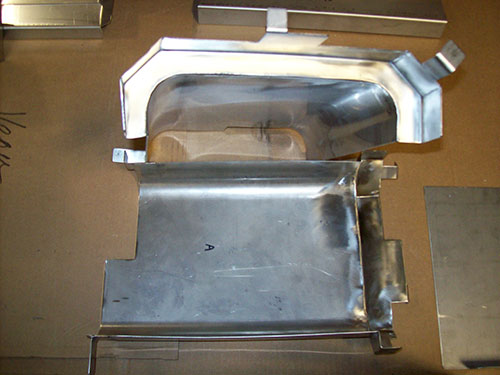
Machines used in manufacturing and for commercial purposes often present a risk to their users. OSHA takes a dim view of machines with inadequate guarding to protect injury to machine operators. In fact, machine guarding violations are one of the ten highest causes of OSHA citations. In 2015 there were a total of 2,295 violations issued in this category, an increase of a hundred over the year before. Penalties ranged from $7K to $700K, depending on the nature of the violation and the injury to the impacted worker. The basis for these citations is OSHA Standard 1910.212.
Standard 1910.212 states that one or more methods of machine guarding shall be provided to protect the operator and other employees in the machine area from hazards such as those created by point of operation, ingoing nip points, rotating parts, flying chips and sparks. Examples of guarding methods include barrier guards, two-hand tripping devices, and electronic safety devices. Guards shall be affixed to the machine where possible and secured elsewhere if for any reason attachment to the machine is not possible. The guard shall be such that it does not offer an accident hazard in itself. Special hand tools for placing and removing material shall be such as to permit easy handling of material without the operator placing a hand in the danger zone. Such tools shall not be in lieu of other guarding required by this section, but can only be used to supplement protection provided.
So if we know the standard, we know the penalties and we really want to make certain our machines are properly guarded and safe for operation what should we do?
The logical place to start is with a risk assessment. Depending on the machine and operation there may be some amount of subjectivity. The good news is that although risk assessments are designed to reduce injuries they can also produce other benefits. These can include improvements to productivity and quality and reductions in cost.
The nature of risk assessment for guarding can vary. It will depend on the type of machine and the nature of the operator interface to the machine. It may be that a team is used to carry out a guarding assessment, since a single individual may not have the necessary knowledge. But the team should include a machine-guarding expert. This individual will be familiar with applicable standards and application of current machine-guarding technology. And machine guarding technology continues to evolve and improve. Experience is an important factor in carrying out a machine-guarding assessment.
There are many firms who have the expertise to carry out a machine guarding assessment. Some of these firms can also implement the outcome of the assessment and design and install the appropriate guards or modifications. Optimation is one such firm. We have many clients who have benefited from our expertise in safety and in our ability to assess and implement machine guarding for our clients.
